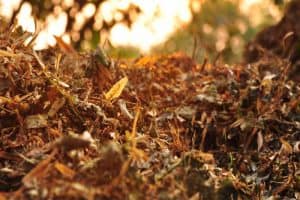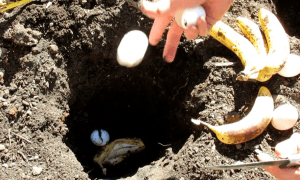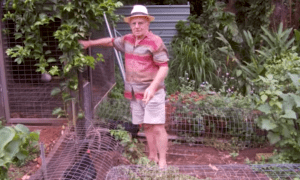 One of the known hallmarks of organic gardening is the effective use of mulches which are materials used in covering the soil’s surface to conserve moisture, enrich the soil through organic matters, maintain consistent soil temperatures, control weeds, and even prevent diseases. In fact, according to Texas A&M University, a well-mulched garden can yield 50% more veggies than an un-mulched garden space.
One of the known hallmarks of organic gardening is the effective use of mulches which are materials used in covering the soil’s surface to conserve moisture, enrich the soil through organic matters, maintain consistent soil temperatures, control weeds, and even prevent diseases. In fact, according to Texas A&M University, a well-mulched garden can yield 50% more veggies than an un-mulched garden space.
Preferred Biodegradable Mulches
Many gardeners favor mulches that decompose into soil-enriching organic matter. These include the following:
- Fertilizer-free lawn/grass clippings. Living greens like lawn/grass clippings are particularly rich in nitrogen and are mostly readily available. Since these are extremely wet even during hot, dry weather, do not layer them onto your garden too thick to avoid them to mat down, go slimy, and stink. Excess of these can be spread out somewhere to dry before adding to the garden.
- Dry leaves. Unlike the “green” materials, the “brown” ones are low in nitrogen but are generally rich in carbon and other minerals. The fallen leaves from most trees make great mulch especially those fallen in the fall season. Dry leaves are the second most available source of home-grown organic matter. Unfortunately, this can become a famine or feast problem. You may bag or bin up excess leaves for use over the next spring, summer growing period. You may shred them for tighter packing. With dry leaves, very little composting takes place even after a long time; thus, tending more towards the formation of leaf-molds which are among the best home-grown mulch types used.
- Made mostly of carbon, hay is one of the most commonly used mulches. The greener the hay, the more nitrogen it contains but note that this element can be lost really quickly. Pasture hay has to be weathered prior to using them as mulch. Even the seed from grasses of good quality are not wanted in your organic vegetable garden that if left to germinate, it could turn your yard into a weedy nightmare.
- Straws are mostly carbon and are materials which are almost similar to grass hay only that it has lesser nutrients. Also, straws from grain harvest are very dry that it sucks moisture rather than conserve it. As a result, it can become a perfect home for field mice and the like over winter. Nevertheless, this can be avoided by weathering the straws.
- Newspapers and cardboards. Old newspapers and cardboard items rank pretty close to the top of the lists of mulch materials often used in and around vegetable gardens. When using either of these two for compost, remember to shred them first otherwise they will compress and just stifle the heap.
Mulching Tips and Tricks
- Whichever you prefer, always keep mulch at least one inch away from plant stems in order to prevent it from rotting and acquiring fungus problems
- Leave about half your grass or lawn clippings as they are an important source of nutrients. Avoid using those of which were treated with herbicides and other toxic pest controls.
- Use only leaves which have already aged at about nine months to allow growth-inhibiting phenols to leak out.
- Beneath the mulch, you may also apply organic nitrogen-rich fertilizers such as aged or composted manure or alfalfa meal, soy meal, and cottonseed meal, as some organic mulch, particularly wheat straws and leaves, can rob the soil of this element while decomposing.






Pingback: 7 Methods to help keep your Organic Garden weed free! – Organic Gardening Secrets
Pingback: Tips for Organic Home Gardeners – Organic Gardening Secrets